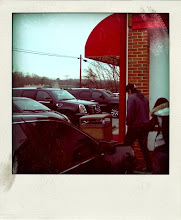Nam June Paik is considered to be the first video artist in America. He participated in the Neo-Dada art movement that, like its predecessor, strove to challenge certain views of what constituted art, to tear down "art with a capital A."
I was drawn to Paik after seeing a particularly powerful piece at the Smithsonian American Art Museum. The piece is called "Electronic Superhighway." It features all of the states in America outlined in neon lights with television monitors broadcasting different things in each state. The audio is largely Martin Luther King Jr. and Lyndon Johnson speeches from the sixties, a formative decade in the history of racial conflict in the US. The piece is touching; it pulls at some emotions in a precise way. I've been to see it multiple times and often observed viewers moved to tears.
Paik's use of video as a media challenges the viewer to accept new media as art. In doing so, works like "Electronic Superhighway" strike a different chord that do contemporary paintings about similar subjects.

No comments:
Post a Comment